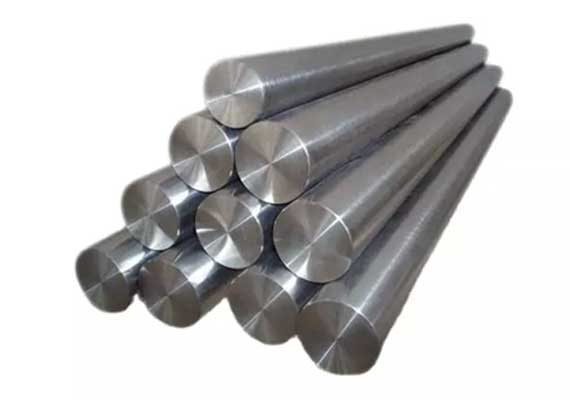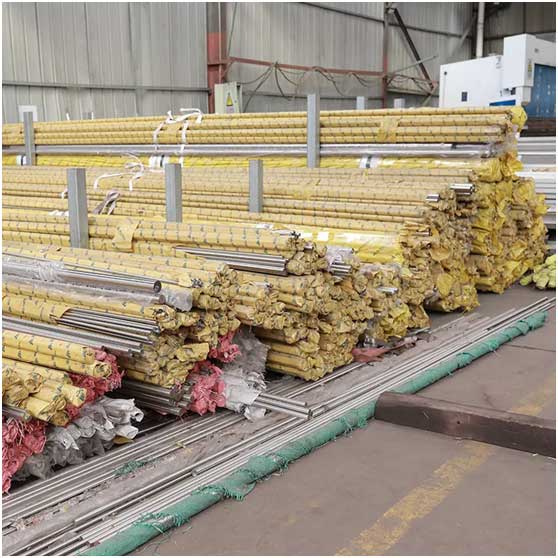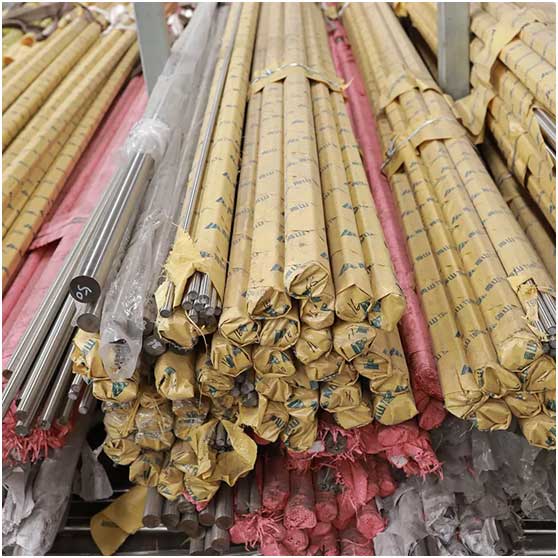
Send your inquiry: sales@cncdsteel.com

Send your inquiry: sales@cncdsteel.com
310S is austenitic chromium-nickel stainless steel with good oxidation resistance and corrosion resistance. Because of the higher percentage of chromium and nickel, 310S has much better creep strength, can work continuously at high temperatures, and has good high temperature resistance. 1. Recommended heat treatment system: 1030 degrees Celsius -1180 degrees Celsius, rapid cooling; 2. Mechanical properties include (1.) Tensile strength: not less than 520; (2.) Provision of no…


Steet pipe

Steet pipe

Steet pipe

310S is austenitic chromium-nickel stainless steel with good oxidation resistance and corrosion resistance. Because of the higher percentage of chromium and nickel, 310S has much better creep strength, can work continuously at high temperatures, and has good high temperature resistance.
1. Recommended heat treatment system: 1030 degrees Celsius -1180 degrees Celsius, rapid cooling;
2. Mechanical properties include
(1.) Tensile strength: not less than 520;
(2.) Provision of non-proportional extension strength: not less than 205;
(3.) Elongation after breaking: not less than 35;
3. Density: 7.98


The process flow of the 310S stainless steel bar production line:
billet acceptance → heating → rolling → double-length cutting → cooling → cutting → inspection → packaging → measurement → storage.
310S Stainless Steel Overview:
310S stainless steel is austenitic chromium-nickel stainless steel. It has good oxidation resistance and corrosion resistance of 310S stainless steel. Because of the higher percentage of chromium and nickel, it has much better creep strength and can continue to operate at high temperatures. Good high temperature resistance. Due to the high content of nickel (Ni) and chromium (Cr), it has good oxidation resistance, corrosion resistance, acid and alkali resistance, and high temperature resistance. High temperature resistant steel pipes are specially used to manufacture electric furnace tubes. The austenitic stainless steel adds carbon After the content, the strength is improved due to its solid solution strengthening effect. The chemical composition of austenitic stainless steel is based on chromium and nickel with the addition of elements such as molybdenum, tungsten, niobium, and titanium. Because of its face-centered cubic structure, Therefore, it has high strength and creep strength at high temperature.
As an important material in the aerospace and chemical industries, 310S heat-resistant stainless steel is widely used in high-temperature environments. High-temperature oxidation is the most common and most important form of corrosion damage at high temperatures. Therefore, the research and development of new materials with high-temperature oxidation resistance has far-reaching significance for my country's aviation industry, chemical industry and national defense.
Chemical Composition & Mechanical Properties:
C :≤0.08,Si :≤1.500,Mn :≤2.00,P :≤0.035,S :≤0.030,Ni :≤19.00-22.00,Cr :≤24.00-26.00
Tensile strength (бb) (Mpa): ≥520
Yield strength (σs) (Mpa): ≥205
Area reduction (ψ)%: ≥50
ób(MPa)≥520, ó0.2(MPa)≥205, δ5(%)≥40, Ψ(%)≥50, HB≤187 It can withstand high temperature above 1150℃.
Density7.98g/cm3, melting point is 1398℃~1454℃
Application:
The maximum working temperature of 310S stainless steel is 1200 ℃, and it can be continuously operated at a temperature of 1150 ℃. The main purpose is to manufacture exhaust pipes, microwave ovens, high-temperature furnaces, cremation furnaces and other steels that require heat resistance, as well as high-heat and high-temperature contact parts.
310S heat-resistant stainless steel can also be used as an important manufacturing material in the aerospace and chemical industries. These components are mainly adapted to high-temperature environments.

RONSCO Stainless Steel Bar Parameter Table | Product Name | 310S (UNS S31008, 1.4845) Stainless Steel Round Bars | Equivalent Grades | AISI 310S, SAE 310S, UNS S31008, DIN/EN 1.4845, JIS SUS310S, X8CrNi25-21 | Type | Cold drawn, Hot rolled, Forged | Shape | Round bar, Flat Bar, Square bar, Hexagonal bar | Standard | Seamless tube: EN 10216-5, NFA 49-217 Seamless and welded tube: ASTM A789 Seamless and welded pipe: ASTM A790 Flanges and valves: ASTM A182 Fittings: ASTM A182; A815 Plate, sheet and strip: ASTM A240, EN 10088-2 Bar and shapes: ASTM A276, A479, EN 10088-3 Forged billets: EN 10088-3 | Available Grades | Stainless steel 301 / 302 / 303 / 304 / 304L / 310 / 310S / 316L / 316Ti / 316LN / 317L / 321 / 410 /420 /430 / 904L / 2205 / 2507 / 32760 / 253MA / 254SMo / XM-19 / S31803 / S32750 / S32205 / F50 / F60 / F55 / F60 / F61 / F65 etc | Monel 400 / Monel K-500 | Inconel 600 / Inconel 601 / Inconel 625 / Inconel 617 / Inconel 690 / Inconel 718 / Inconel X-750 | Incoloy A-286 / Incoloy 800 / Incoloy 800H / Incoloy 800HT | Incoloy 825 / Incoloy 901 / Incoloy 925 / Incoloy 926 | Nimonic 75 / Nimonic 80A / Nimonic 90 / Nimonic 105 / Nimonic C263 / L-605 | Hastelloy B / Hastelloy B-2 / Hastelloy B-3 / Hastelloy C / Hastelloy C-276 / Hastelloy C-22 | Hastelloy C-4 / Hastelloy C-2000 / Hastelloy G-35 / Hastelloy X / Hastelloy N | PH stainless steel 15-5PH / 17-4PH / 17-7PH | Diameter | 6mm - 600mm | Finish | Bright, Pickling, Black, Polished, | Packing | Wooden box, Waterproof polybag | Inspection | TUV,BV,ABS,LR and so on | Application | Construction, shipbuilding, Chemical, Pharmaceutical & Bio-Medical, Petrochemical & Refinery, Environmental, Food Processing, Aviation, Chemical Fertilizer, Sewage Disposal, Desalination, Waste Incineration etc. | Processing Service | Machining : Turning / Milling / Planing / Drilling / Boring / Grinding / Gear Cutting / CNC Machining | Deformation processing : Bending / Cutting / Rolling / Stamping | Forged | Delivery Time | 7-40 days | Trade Term | FOB CIF CFR CIP DAP DDP EXW | Payment | T/T, L/C,D/A,D/P, Western Union,MoneyGram,According to customer requirements payments for offline orders. | Transportation | By air, by sea, by train, by truck | Sample | Free | Warranty | Trade assurance after sales service | |
Products are widely used in construction, machinery, coal mining, chemical industry, electric power, railway vehicles, automobile industry, highways, bridges, containers, sports facilities, agricultural machinery, petroleum machinery, prospecting machinery, greenhouse construction and other manufacturing industries
The corrosion resistance of stainless steel coils decreases as the carbon content increases. Therefore, the carbon content of most stainless steels is low, up to 1.2%, and some steels have a low ωC (carbon content) of even less than 0.03% (such as 00Cr12). The main alloying element in stainless steel coil is Cr (chromium). Only when the Cr content reaches a certain value, the steel has corrosion resistance. Therefore, the goods Cr (chromium) content of at least 10.5%. Stainless steel coil also contains Ni, Ti, Mn, N, Nb, Mo, Si, Cu and other elements.
Most of the requirements for use are to maintain the original appearance of the building for a long time. In determining which type of goods to choose, the main considerations are the required aesthetic standards, the corrosiveness of the local atmosphere and the cleaning system to be used. However, other applications are increasingly seeking structural integrity or impermeability. Examples include roofs and sidewalls of industrial buildings. In these applications, construction cost to the owner may be more important than aesthetics, and the surface may not be very clean. The use of 304 stainless steel coils in dry interior environments is quite effective.
Weldability. Different product uses have different requirements for weldability. A class of tableware generally does not require weldability, even including some cookware companies. However, most products require raw materials with good weldability, such as second-class tableware, insulation cups, steel pipes, water heaters, water dispensers, etc.
Corrosion resistance. Most stainless steel coil products require good corrosion resistance, such as Class I or Class II tableware, kitchen utensils, water heaters, water dispensers, etc.
Polishing performance. In today’s society, stainless steel coil products in the production process are generally polished, only a few products such as water heaters, drinking fountains, etc. do not need to be polished. Therefore, this requires raw materials with good polishing performance.
1. The need for pre-treatment
Pretreatment is an important treatment step before the surface of
stainless steel coil parts enter surface treatment (including pickling,
chemical polishing and electrochemical polishing, electroplating,
passivation, black coating, coloring, chemical treatment, etc.). During
the forming process of goods parts, the surface may adhere to oil
stains, burrs, rough surfaces and oxides. Therefore, before surface
treatment, oil stains, burrs, uneven surfaces and oxides must be removed
in order to obtain subsequent satisfactory results through processing.
2. Treatment of removed dirt
Stainless steel coil surface pretreatment in the need to remove the dirt
can be divided into two categories: organic and inorganic substances.
(1) organic dirt. Including mineral oil (such as diesel, oil, paraffin,
gypsum, etc.) and animal oil, vegetable oil (such as soybean oil,
camellia oil, rapeseed oil, lard, butter, etc.). These oils are mainly
from the stainless steel coil zero cattle processing process used in the
lubricant. , cutting oil, quenching oil, polishing paste and polishing
paste, and fingerprints.
(2) Inorganic dirt. Including dirt, dust particles, oxides and other
contaminants generated during the heat treatment process.
3. Pretreatment steps for stainless steel coil parts
(1) The surface is mechanically leveled. Eliminate the roughness of the
stainless steel coil surface, through mechanical polishing and grinding
to achieve a surface finish.
(2) Degreasing. Remove the surface oil and dirt.
(3) Acid washing. Remove the oxides on the surface.
(4) Weak corrosion. Activates the surface to be treated, removes the
surface passivation film, and exposes the metal crystal structure.
Stainless steel is a high-alloy steel, with a large resistance to rolling deformation. In order to carry out high-efficiency and high-precision rolling, rigid rolling mills should be used, generally multi-roller cold rolling mill.
Special welding process is also a feature of cold-rolled stainless steel coil production.
In the production process of cold rolled stainless steel coil, the raw material (hot rolled coil) should be annealed, intermediate annealing should be carried out in the cold rolling process, and the final product should be annealed, so annealing is an important part of the production.
Cold-rolled stainless steel is a high-grade steel products, there are strict requirements for surface quality. Not only are metallurgical defects caused by the previous process not allowed, but also obvious defects caused by the cold rolling process.
Send your inquiry / assessment to Us. Anything need us ,please don’t hesitate contact us here! we will keep it secret for you !

Send your inquiry / assessment to Us. Anything need us ,please don’t hesitate contact us here! we will keep it secret for you !
